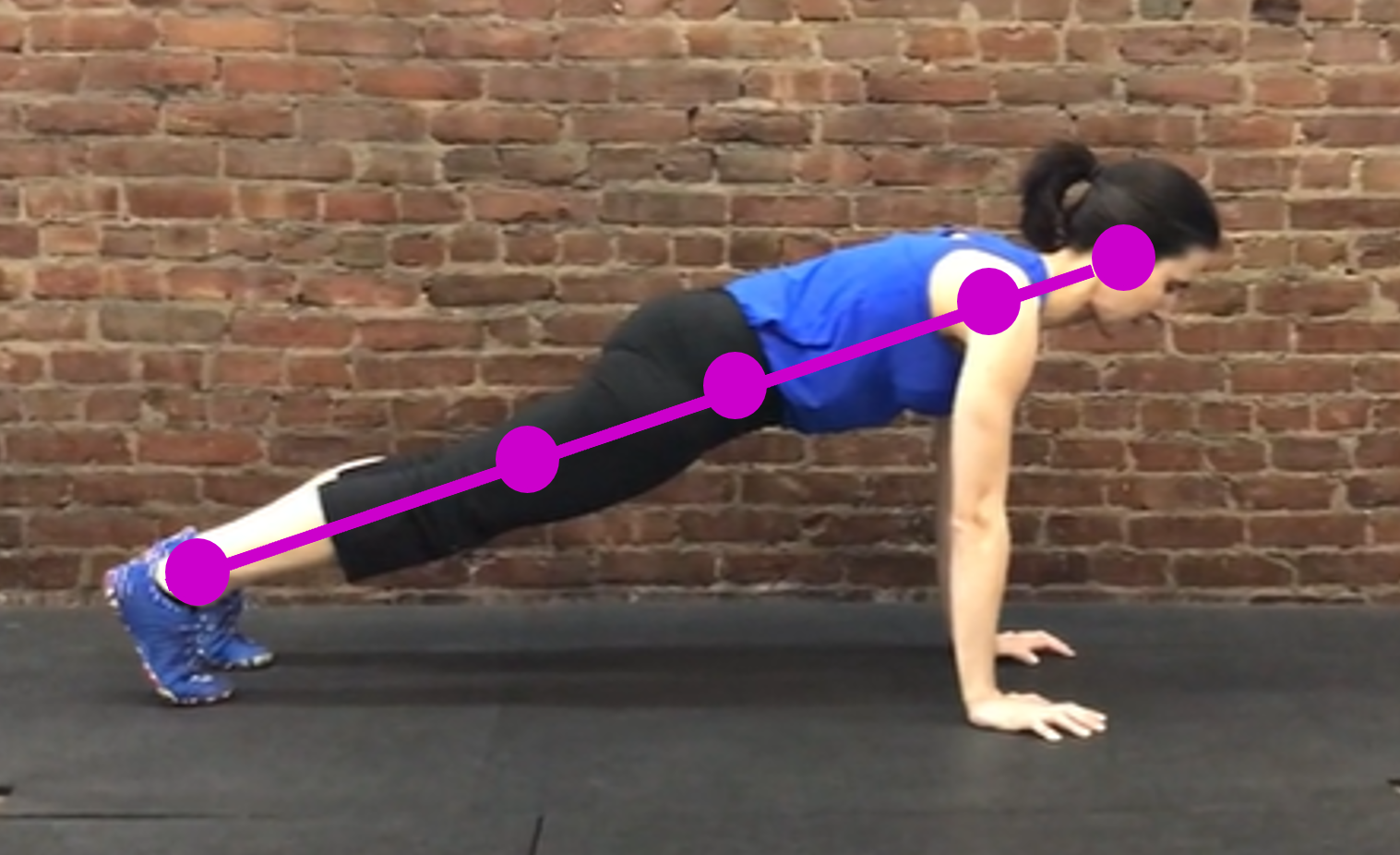Core training is essential during pregnancy to help support your spine and other structures of your trunk as your body grows and changes. However, the core routine you may have been accustomed to doing pre-pregnancy will require some modifications as your pregnancy progresses.
The questions that come up most often with respect to prenatal core training have to do with planks. Are they safe to do or should they be avoided? If they can be done, how long is it safe to do them? Should they be modified in any way, and if so, when and how?
So, let’s take a deep dive into prenatal planking to help clear up any confusion and ensure you are armed with the information you need to build your core strength in a safe and effective way during your pregnancy.
Be sure to take note of the additional resources at the end of this post — including sample plank modifications, additional beneficial core exercises, and a FREE Guide on all the movements and activities to avoid or regress by trimester (and why).
Are Planks Safe During the First Trimester?
Planks can be perfectly safe during the first trimester if performed with good technique. To execute well, you need two key ingredients:
1. Neutral alignment: As you can see below, there should be a straight line between your ear-shoulder-hip-knee-ankle. You also want to ensure you have a neutral pelvis to protect your lower back and to avoid putting excess pressure on your abdominal muscles. To achieve this, imagine you have a tail extending from your tailbone. Try to “tuck your tail” between your legs. For further instruction, see this video on how to perform a plank.

2. 360° Breathing: We cannot mention any core exercise without mentioning the #1 most effective core exercise. Master 360° Breathing FIRST, as this should be incorporated into every movement you do. For planks specifically, inhale lightly through your nose and exhale more forcefully through your mouth to maintain the stiffness in your trunk required to hold the position. Be sure not to hold your breath (a common tendency). This can elevate pressure in your abdominal cavity, and if done repeatedly over time, it can increase the likelihood of developing diastasis recti.
NOTE: The points above apply to ALL individuals performing planks. They are not pregnancy-specific. During the first trimester — when there is no belly — the guidance is the same as it is for non-pregnant individuals. Planks are safe and effective — if performed adhering to the points above.
Are Planks Safe During the Second Trimester?
When your belly grows to medium size (starting around the beginning or middle of the second trimester), that is typically the time to begin regressing planks due to the increase in intra-abdominal pressure (IAP) that a growing belly creates. IAP is the amount of pressure within your abdominal cavity. A certain amount of pressure is necessary for your core to assist in movement and force generation. However, too much pressure (IAP) is a primary contributor to diastasis recti.
As your belly gets bigger — adding mass to your abdominal cavity — IAP will continue to elevate. Therefore, it is critical to limit movements and behaviors that add to that pressure buildup. That is the underlying reason why we recommend regressing center planks during the second trimester.
Another key indicator that it is time to regress planks is if you notice “coning” in your belly, as you see in the images below (you can also see this above in the cover image for this post). This coning is always an indicator that the movement you are doing is too challenging for your core (at this time) and should be regressed. Therefore, even if you see this coning during your first trimester (when doing a plank or any other movement), it means that movement should be regressed.

Use this coning as a way to determine if you need to regress side planks during the second trimester. Side planks vary by individual. Some may be able to tolerate full side planks during second trimester, whereas others will need to begin regressing. Watch for signs of coning in your belly as a way to determine if you need to regress or not.
Are Planks Safe During the Third Trimester?
During the third trimester, when the belly is at its largest, we recommend avoiding full downward facing planks. Even with good form, the elevated IAP that this direct downward facing position creates (when performed with a large belly) is just too much.
Once again, side planks vary by individual. Most people will need to regress side planks during the third trimester. However, some individuals may still be able to tolerate full side planks. Watch for coning as an indicator the movement is not appropriate for your body.
Plank Regression Options
There are many ways to regress planks. Here are just a few options. Click the links below to watch a video. The movements are listed in order from most to least challenging. So, you could begin with the first exercise, and regress from there.
Center Plank Regressions
Side Plank Regressions
Want Additional Resources?
For additional resources to help you exercise safely and effectively during pregnancy, explore our training programs and services. You’ll find a variety of offerings tailored to different needs — from education, to self-guided programs, to the ability to work with an expert coach.
Or, if you’re a health & fitness pro interested in coaching pre & postnatal clients, check out our ProNatal Education & Certification.
